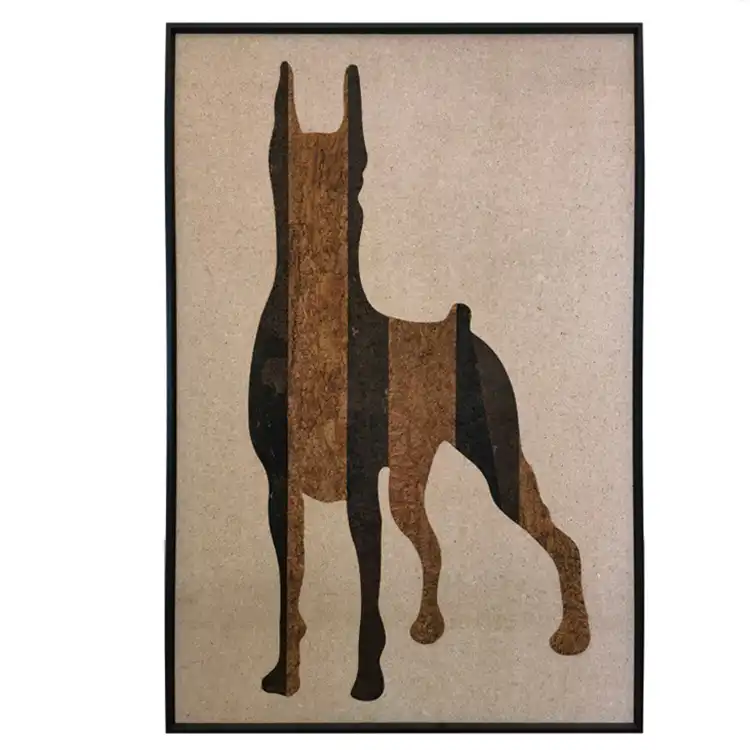How to Master Dog Painting: Pet Portraiture Techniques Unveiled
2025-08-04 18:04:14
Mastering the art of dog painting is a rewarding journey that allows artists to capture the essence and personality of our beloved canine companions. Whether you're an aspiring pet portraitist or simply looking to immortalize your furry friend on canvas, this guide will unveil the secrets to creating stunning custom dog paintings that truly bring our four-legged friends to life. From honing your observational skills to mastering brush techniques for realistic fur textures, we'll explore the essential steps to elevate your dog portraiture skills. By the end of this article, you'll be equipped with the knowledge and techniques to create captivating canine masterpieces that celebrate the unique character of each dog you paint. So grab your brushes, and let's dive into the world of dog portraiture, where art and animal lovers unite to create timeless tributes to man's best friend.

Capturing Canine Character: Essential Observation Skills
The key to creating lifelike dog paintings lies in your ability to observe and understand canine anatomy, expressions, and behaviors. Developing these crucial observation skills will elevate your artwork from mere representation to a true capture of a dog's unique personality.
Understanding Canine Anatomy
To paint dogs accurately, you must first understand their underlying structure. Study canine anatomy, paying close attention to skeletal and muscular systems. This knowledge will help you depict proper proportions and create realistic poses in your paintings. Focus on:
- Skull shape and muzzle length variations across breeds
- Ear positions and types (floppy, erect, semi-erect)
- Body proportions and leg structure
- Tail carriage and shape
Decoding Canine Expressions
Dogs communicate a wealth of emotions through subtle facial expressions and body language. Learn to recognize and interpret these cues to infuse your paintings with genuine emotion:
- Eye shape and positioning
- Ear movements and positions
- Mouth shape (relaxed, panting, alert)
- Overall body posture
Capturing Unique Personalities
Every dog has a distinct personality that shines through in their behavior and interactions. Spend time observing dogs in various settings to capture these nuances:
- Playful moments during fetch or tug-of-war
- Relaxed poses during naps or lounging
- Alert stances when curious or on guard
- Affectionate interactions with their human companions
By honing these observation skills, you'll be able to create custom dog paintings that not only look realistic but also capture the essence of each unique canine subject.

Fur Textures and Colors: Brush Techniques Demystified
One of the most challenging aspects of dog portraiture is accurately depicting the diverse fur textures and colors found across different breeds. Mastering these techniques will bring your dog painting to life and create a tactile quality that viewers can almost feel.
Choosing the Right Brushes
Selecting the appropriate brushes is crucial for achieving various fur textures:
- Flat brushes: Ideal for creating broad strokes and laying down base colors
- Filbert brushes: Perfect for blending and creating soft transitions
- Round brushes: Excellent for adding details and fine lines
- Fan brushes: Great for creating wispy fur effects and blending
Layering Techniques for Realistic Fur
Creating realistic fur requires patience and a layered approach:
- Start with a base layer of the primary fur color
- Add depth with darker shades in shadowed areas
- Layer lighter colors to create highlights and dimension
- Use dry brush techniques to add texture and individual hairs
- Blend colors gently to create a seamless, natural look
Capturing Various Fur Types
Different breeds have unique fur characteristics that require specific techniques:
- Short, smooth coats: Use short, directional brushstrokes
- Long, flowing coats: Employ longer, sweeping strokes with a fan brush
- Curly or wiry coats: Utilize stippling techniques and textured brushes
- Double coats: Layer undercoat and topcoat colors for depth
Color Mixing for Natural Fur Tones
Achieving natural-looking fur colors involves careful color mixing:
- Start with a limited palette of primary colors
- Mix colors on your palette to create custom shades
- Use complementary colors to create depth and shadow
- Add subtle variations in tone to mimic natural fur patterns
By mastering these brush techniques and color mixing strategies, you'll be able to create custom dog paintings with stunningly realistic fur that captures the unique beauty of each canine subject.

From Sketch to Masterpiece: Step-by-Step Dog Portrait Guide
Creating a captivating dog portrait involves a series of steps that transform a simple sketch into a lifelike masterpiece. Follow this comprehensive guide to bring your canine subject to life on canvas.
Preliminary Sketching
Begin with a light sketch to establish the basic structure and composition:
- Use basic shapes to outline the dog's head and body
- Sketch in key features like eyes, nose, and ears
- Refine the sketch, paying attention to proportions and angles
Establishing the Underpainting
Create a foundation for your dog painting with an underpainting:
- Apply a thin wash of color to establish overall tones
- Block in basic shadow and highlight areas
- Define the background to create depth and context
Building Layers of Color
Gradually build up color and texture:
- Start with broader strokes to lay down base colors
- Layer in mid-tones and shadows to create depth
- Add highlights to bring dimension to the fur
- Use glazing techniques for subtle color variations
Adding Fine Details
Bring your portrait to life with carefully placed details:
- Refine facial features, focusing on eyes, nose, and mouth
- Add individual fur strokes for texture and realism
- Paint whiskers and other fine details with a thin brush
- Enhance the eyes to capture the dog's expression and personality
Final Touches and Refinement
Polish your artwork to perfection:
- Step back regularly to assess the overall composition
- Adjust values and colors for balance and harmony
- Add final highlights to create a sense of dimension
- Refine edges to create focus and depth
Varnishing and Presentation
Protect and showcase your finished dog painting:
- Allow the painting to dry completely
- Apply a protective varnish to enhance colors and protect the surface
- Choose a complementary frame that enhances the artwork
By following this step-by-step guide, you'll be able to create stunning custom dog paintings that capture the unique personality and beauty of your canine subjects. Remember, practice and patience are key to mastering the art of dog portraiture.
Conclusion
Mastering the art of dog painting is a rewarding journey that combines keen observation, technical skill, and a deep appreciation for our canine companions. By honing your observation skills, mastering fur textures and colors, and following a structured approach to portrait creation, you'll be well-equipped to create stunning custom dog paintings that capture the essence of each unique subject.
As you continue to refine your skills, consider exploring innovative materials that can add depth and texture to your artwork. At Xi'an Leecork Co., Ltd., we offer a range of cork products that can be incorporated into your artistic process. Our cork sheets and rolls provide a unique, natural texture that can be used as a canvas or incorporated into mixed media pieces, adding an organic element to your dog portraits.
Whether you're creating portraits for personal enjoyment or offering custom dog paintings to clients, the techniques and insights shared in this guide will help you elevate your artwork to new heights. Remember, each brushstroke is an opportunity to celebrate the bond between humans and their loyal canine companions.
For more information on our cork products and how they can enhance your artistic endeavors, please don't hesitate to contact us at info@leecork.com. Let's explore how the natural beauty of cork can complement your dog painting masterpieces!
References
1. Johnson, E. (2021). The Art of Animal Portraiture: Techniques and Inspiration. Wildlife Art Press.
2. Martinez, S. (2020). Mastering Dog Anatomy for Artists. Canine Creative Publishing.
3. Thompson, L. (2019). Color Theory for Pet Portraiture. Animal Art Academy.
4. Wilson, R. (2022). Brush Techniques for Realistic Fur Textures. Pet Portrait Quarterly, 15(2), 45-58.
5. Chen, H. (2018). From Sketch to Masterpiece: A Comprehensive Guide to Pet Portraiture. Artistic Companions Press.
6. Baker, M. (2023). Capturing Canine Expressions in Art. Dog Lovers' Art Review, 7(3), 112-125.
You May Like
0Related Industry Knowledge


